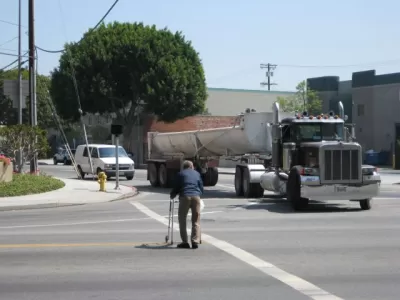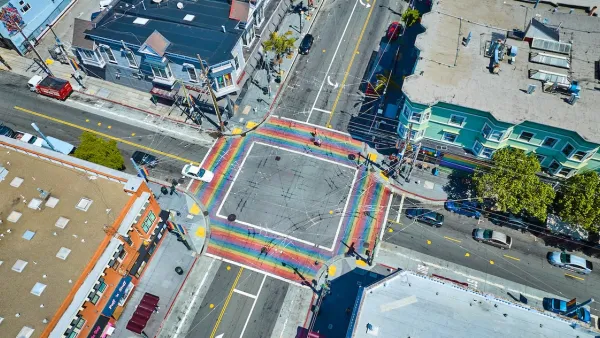A recent report has shed light on the lack of pedestrian signals at intersections around the city of New Orleans, where pedestrians have been injured or killed at greater rates than more populous neighboring parishes.

New Orleans' laissez faire attitude towards pedestrian signals at stop lights is leading to injuries and deaths at intersections around the city. Jessica Williams of The Advocate reports that a lack of funding and choices made by city officials to "narrowly interpret" federal guidelines on signalization requirements has created a situation where four-fifths of intersections in the city with stop lights don't include the accompanying walk/don't walk pedestrian signals.
More people died in New Orleans after being hit by cars than in any other city in Louisiana from 2013 to 2015. In four of the past five years, the city had more than twice the rate of pedestrian injuries as Jefferson and East Baton Rouge parishes, the report said. Both of those parishes have larger populations than New Orleans.
Few pedestrian signals exist in New Orleans partly because the city’s Department of Public Works used “gut calls” and anecdotal evidence to decide where to put them, a move [Inspector General Ed Quatrevaux] said ignored best practices.
“The result was arbitrary departmental practices that discouraged the installation of pedestrian crossing signals and made New Orleans a more dangerous place for pedestrians,” the report said.
Williams reports that new funds for pedestrian signalization is proposed as part of the mayor's upcoming budget, however it will still fall short of covering all signalized intersections in the city.
FULL STORY: Blown red lights don't represent biggest danger for pedestrians in New Orleans, report says

Maui's Vacation Rental Debate Turns Ugly
Verbal attacks, misinformation campaigns and fistfights plague a high-stakes debate to convert thousands of vacation rentals into long-term housing.

Planetizen Federal Action Tracker
A weekly monitor of how Trump’s orders and actions are impacting planners and planning in America.

In Urban Planning, AI Prompting Could be the New Design Thinking
Creativity has long been key to great urban design. What if we see AI as our new creative partner?

King County Supportive Housing Program Offers Hope for Unhoused Residents
The county is taking a ‘Housing First’ approach that prioritizes getting people into housing, then offering wraparound supportive services.

Researchers Use AI to Get Clearer Picture of US Housing
Analysts are using artificial intelligence to supercharge their research by allowing them to comb through data faster. Though these AI tools can be error prone, they save time and housing researchers are optimistic about the future.

Making Shared Micromobility More Inclusive
Cities and shared mobility system operators can do more to include people with disabilities in planning and operations, per a new report.
Urban Design for Planners 1: Software Tools
This six-course series explores essential urban design concepts using open source software and equips planners with the tools they need to participate fully in the urban design process.
Planning for Universal Design
Learn the tools for implementing Universal Design in planning regulations.
planning NEXT
Appalachian Highlands Housing Partners
Mpact (founded as Rail~Volution)
City of Camden Redevelopment Agency
City of Astoria
City of Portland
City of Laramie





























